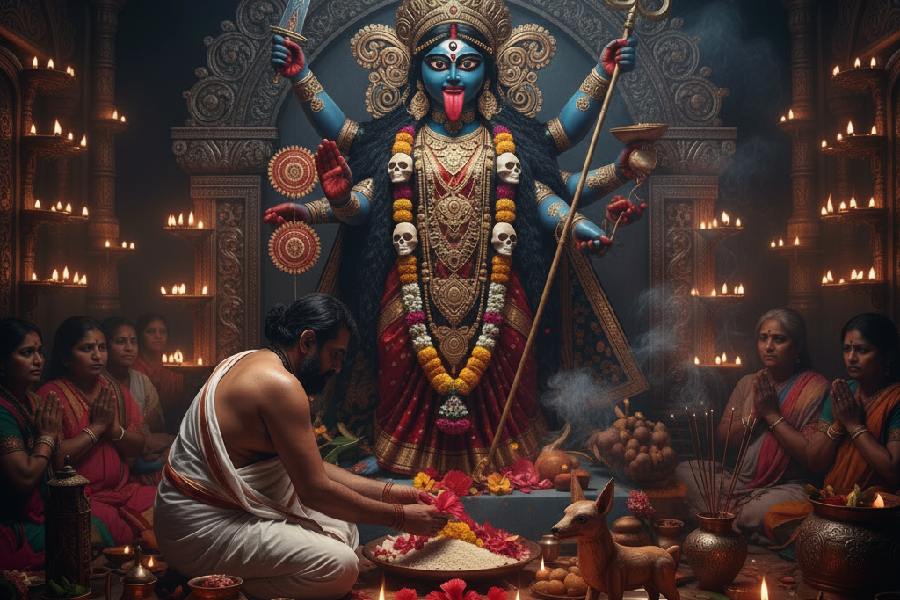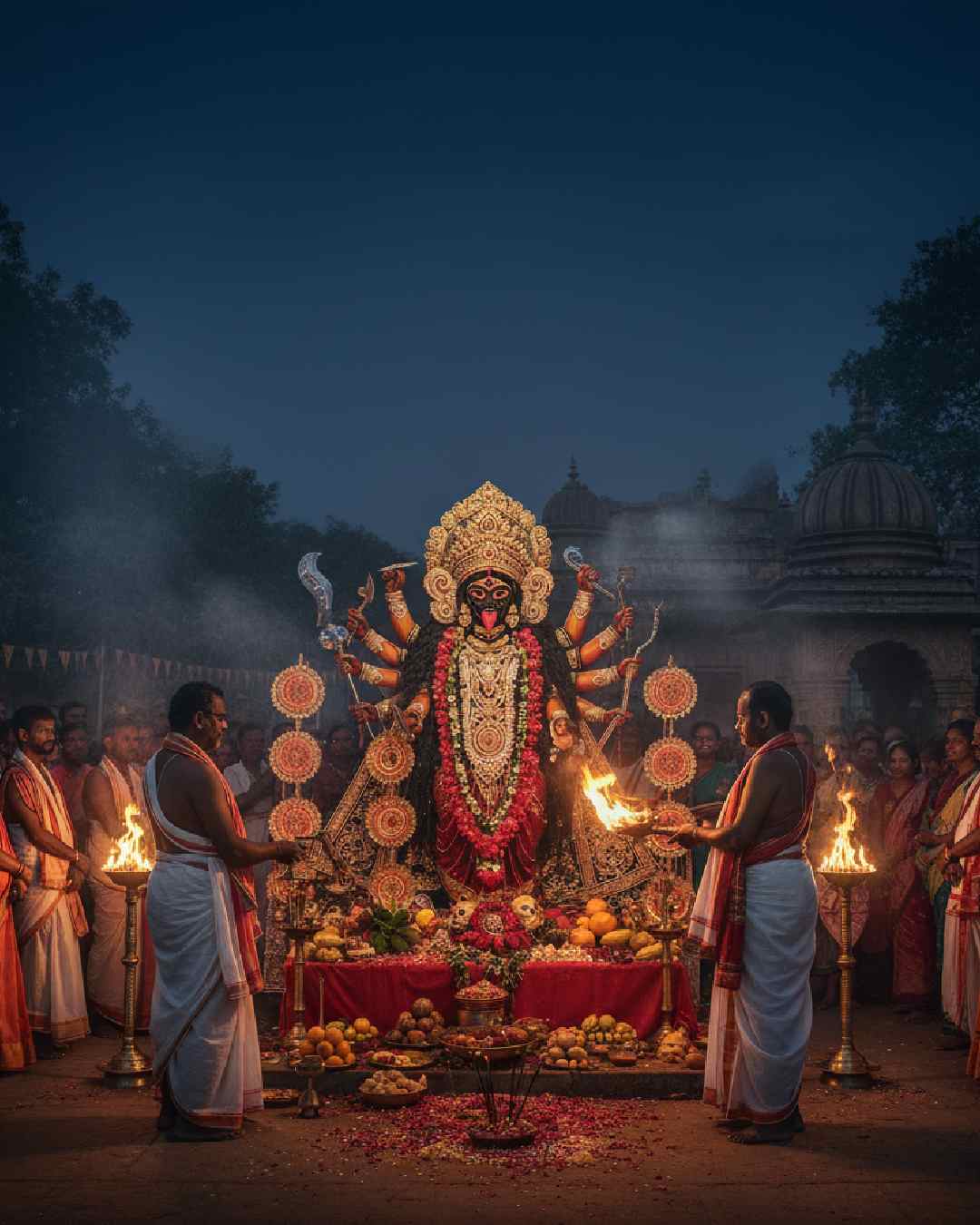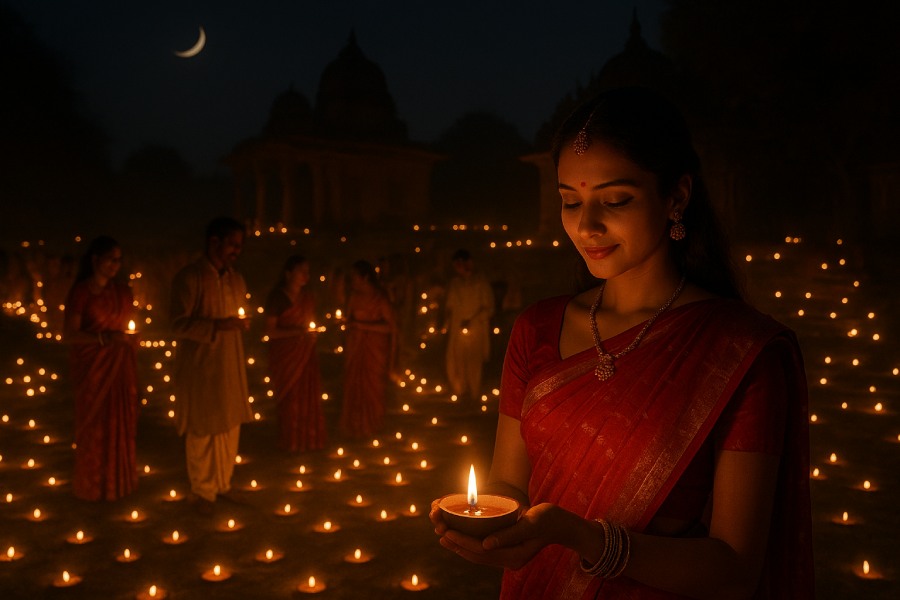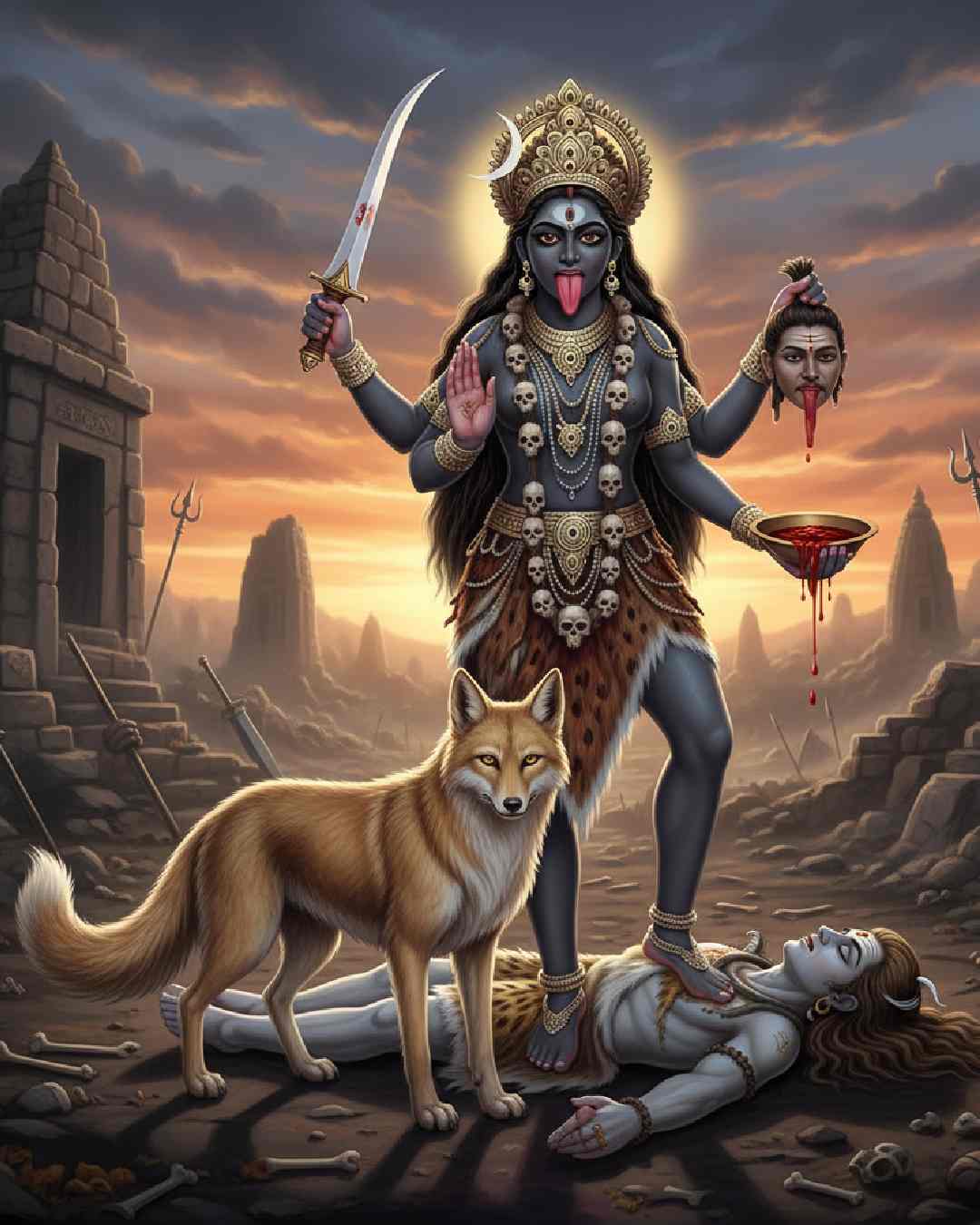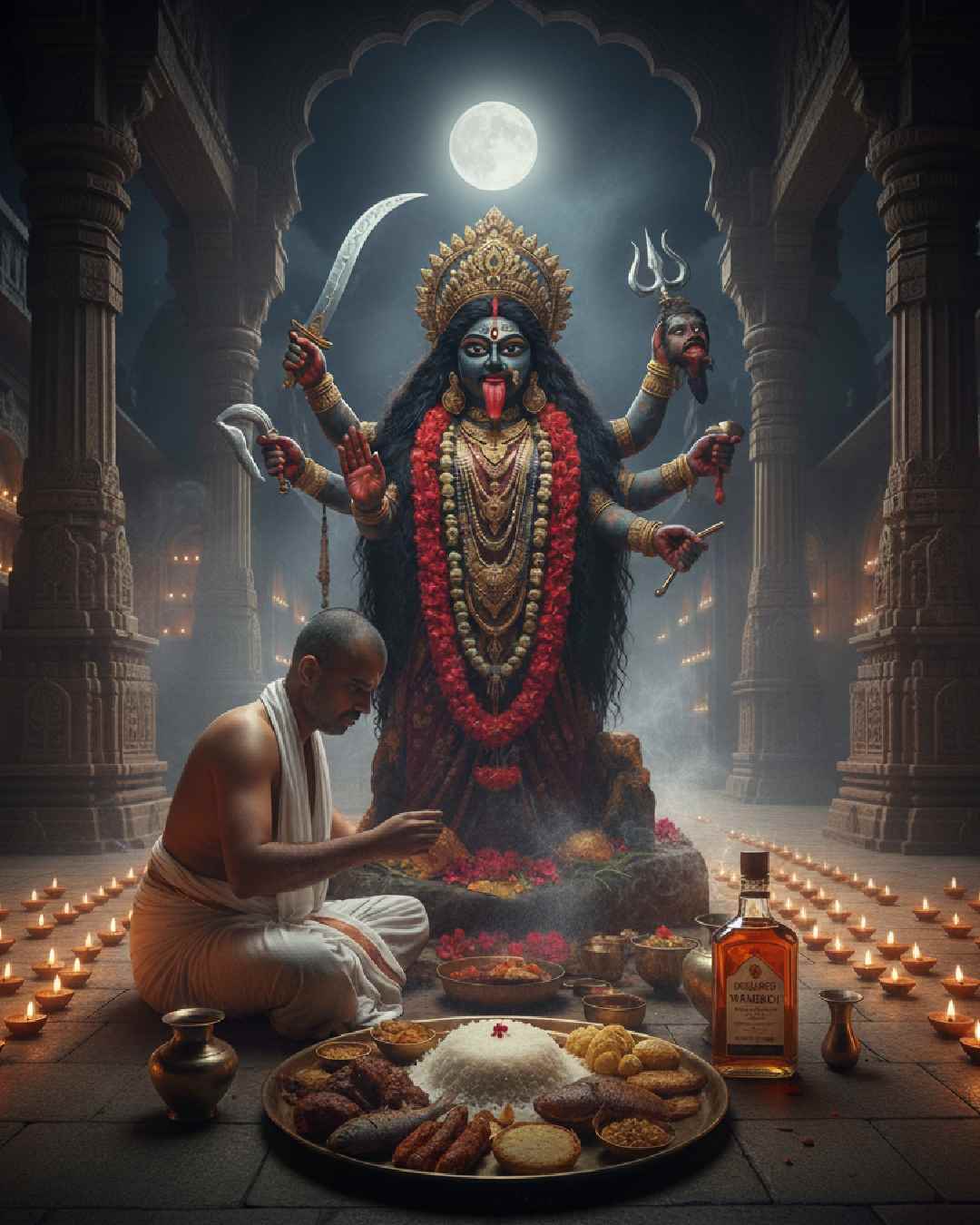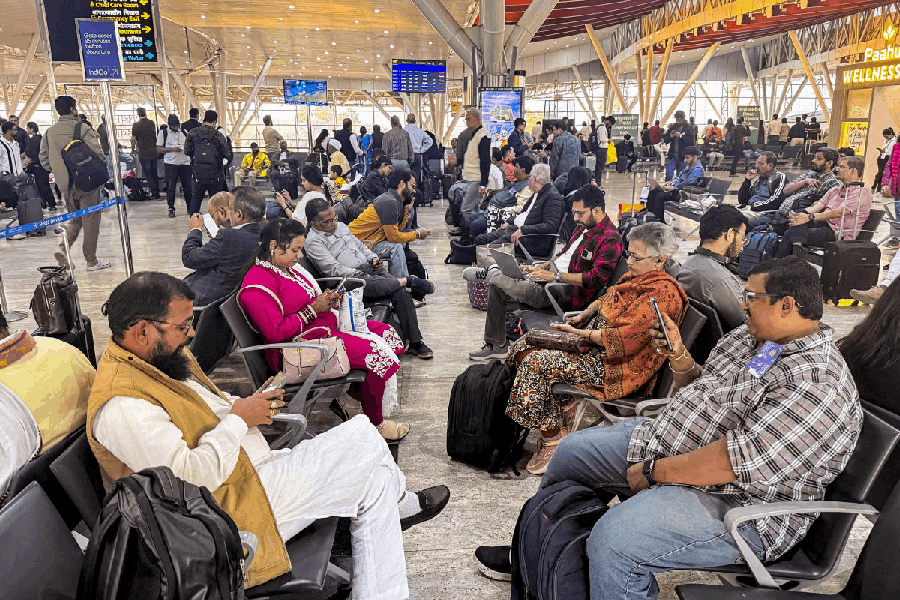Bhadra Kali, Chamunda, Sashankalika — known by many names, the Goddess Kali embodies the eternal power of the divine feminine.
According to Hindu scriptures, Kali emerged from Durga’s brow during battle to slay the demon, whose spilled blood spawned more demons. Kali vanquished him by drinking his blood, symbolising the triumph of good over evil.
Goddess Kali is also believed to embody time itself — both creation and destruction — dwelling in the cremation ground as the eternal force of transformation.
Observed with devotion and grandeur, Kali Puja, also known as Shyama Puja or Mahanisha Puja, celebrates the goddess who protects, transforms and renews.
But have you ever wondered why it is observed on Amavasya? Or why does a jackal accompany her?
To understand the rituals that define Kali Puja, My Kolkata spoke with author Tamaghna Naskar, who is well-versed in its historic and spiritual traditions.
Significance of Amavasya (new moon) in Kali Puja
According to Rudra Yamala Tantra, it is said that the Amavasya (new moon) night of Kartik (lunar) month, especially on Panchadashi of Krishna Paksha (the fifteenth day of the dark fortnight), holds special significance for Kali Puja. Worshipping Maa Kali on this night is believed to bring her blessings and protection.
The new moon symbolises complete darkness and Kali’s power is considered strongest at this time.
Again, it is said in the Kalikalpa that one who worships goddess Maheshwari (Maa Kali) on the great night of the month of Kartika, using the proper offerings, attains kingship.
Hence, the Kartik Amavasya night is believed to be the most auspicious time to seek Maa Kali’s blessings, which is why Kali Puja is observed on this night.
Why is it also called Dipannita Amavasya?
Dipannita Amavasya refers to the new moon night brightened with lamps, symbolising the triumph of light over darkness. It is said that after Lord Rama’s victory over Ravana, he returned to Ayodhya with Sita and Lakshman on a dark new moon night. To celebrate their homecoming, the villagers lit up the town with diyas. This night came to be known as Dipannita Amavasya, highlighting the victory of light over darkness.
Maa Kali and her jackal: The hidden meaning
It is said that Maa is present within the jackal as consciousness itself.
The jackal that accompanies Kali represents her presence in the cremation ground and her power over life and death. It is both her companion and symbol of awareness, showing how she destroys darkness and guides souls. Ancient texts even depict the goddess with a jackal’s face. Hence, during rituals, people pay respect to this bond and seek the goddess’s protection.
Lighting 14 diyas and consuming ‘choddo shaak’
In Bengal, the day before Kartik Amavasya, called Chaturdashi, is traditionally linked with spirits and the fourteen green leaves (Choddo Shaak).
Considered the Bengali version of Halloween, it is believed that spirits come close to the earthly realm on this day.
In Bengali households, it is customary to eat 14 types of greens, which has a scientific basis. The month of Kartik brings seasonal changes, making it important to boost immunity against common illnesses like cough and cold. To protect themselves, people eat 14 types of leafy greens.
Lighting 14 diyas keeps negative energy away.
Why Maa Kali receives liquor as an offering
Maa Kali is offered a variety of food like liquor, mutton, rice, and fish during the puja across Bengal.
According to the scriptures, Kali sadhana cannot take place without these five Ms - Madira, Maans, Matsya, Mudra and Maithun. When individually observed, these five things seem to be very ordinary. But, deep down lies a theory that combines these five elements — called Pancha Tatya.
Liquor is offered to Maa Kali because she is the consort of Kaal (Shiva), and devotees honour her in the same way as him.
Making Maa Kali dance during worship
During Kali Puja, devotees lift Maa Kali and carry her through the streets, making it appear as if she is dancing on their shoulders. This ritual allows them to let go of their worries and seek her blessings.
In Shantipur, West Bengal, the Bama Kali Bhasan sees devotees carrying the idol on their shoulders, rejoicing as they honour the triumph of good over evil and light over darkness.
The dance symbolises Kali’s cosmic power, with her left foot on Lord Shiva as per Tantric tradition, reminding devotees that she defeats darkness, protects them and gives her blessings.
